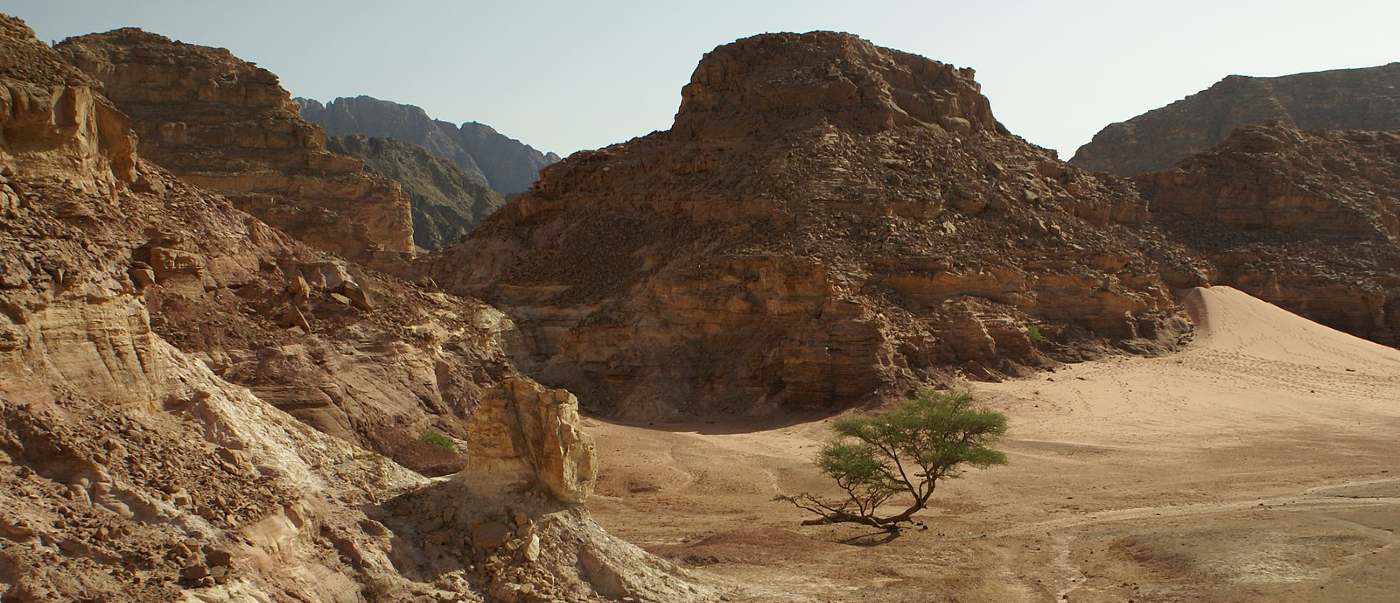
www.goodnewsnetwork.org
A Team of Maverick Engineers Want to Roll the Geological Clock Back on Sinai and Replace Desert with Lush Greenery
Turning a desert back into farmland on Egypt's Sinai Peninsula is a mission of Ties Van der Hoeven and his "Weather Makers."
Social & Lifestyle
A pioneering Dutch land engineer wants to turn the Sinai Desert into the Sinai Forest, using techniques demonstrated on a mass scale in China.
Theorizing that since it’s been confirmed that even primitive human activity can permanently degrade a landscape, with effort it should be perfectly plausible to return a landscape to a greener, more watered state too.
Green Gold, a documentary covering the transformation of the dry, arid deserts of the Loess Plateau in China into green productive farmland, has Dutch morphologist and former dredger—whose CV includes work on Dubai’s artificial islands—thinking he might do the same in the Biblical land of Sinai, where Egypt meets Asia.
While working as a dredging specialist, Ties Van der Hoeven, founder of The Weather Makers Holistic Engineering, was contacted by Egyptian colleagues who asked him if it were possible to try and dredge Lake Bardawil in the Sinai Peninsula back to a normal state. Where once the waters reached down 20-40 meters, the lake had become so filled with sediment as to be not much deeper than a community diving pool.
In surveying for the project, Van der Hoeven came to realize the bottom of the lake was essentially acting as a sewer for the entire peninsula’s soil runoff for thousands of years. This runoff is evidence of an emerging scientific theory that Sinai, and in fact all of North Africa, was green at one point, with Van der Hoeven discovering ancient monastery records that tally timber exports, and cave paintings of trees and grass.
While the unique relationship of the region to solar weather patterns already means that the Sahara needs no unique reason for why it became the world’s largest hot desert, ancient human shepherds across North Africa could have disrupted the delicate plant cover which was critical for keeping the soil alive and the landscape watered, “desertifying” the area much faster.
One of Van der Hoeven’s colleagues is Professor Millán, a 79-year-old Spanish meteorologist whose life’s work has been investigating the change in weather patterns off the Iberian coast and their relationship to the loss of wetlands.
Millán, and in fact the director of Green Gold—with whom Van der Hoeven also collaborates—both arrived independently at the same conclusion about the impact of humans’ tinkering of the landscape. Essentially, if one chops down trees and degrades the ecosystem, rains will eventually disappear, since vegetation is necessary for holding water in the land, and returning it to the sky.
“Water begets water, soil is the womb, vegetation is the midwife,” goes Millán’s simple maxim, according to The Guardian.
Rain in the desert
So with the Sinai, Van der Hoeven aims to start with restoring the cycle of water. After the lake, he wants to work to return the surrounding area to wetlands to ensure the landscape can retain at least some water.
Next they want to take to the heights, 700 meters (2,100 feet) above sea level, where fog catchers can be employed to collect the moisture condensing at high altitudes.
























































